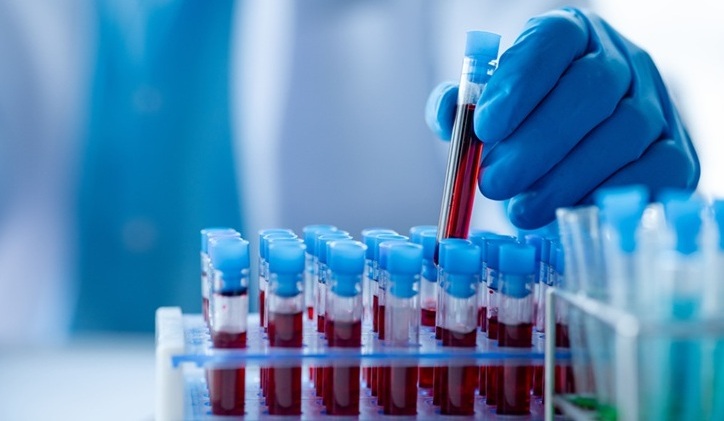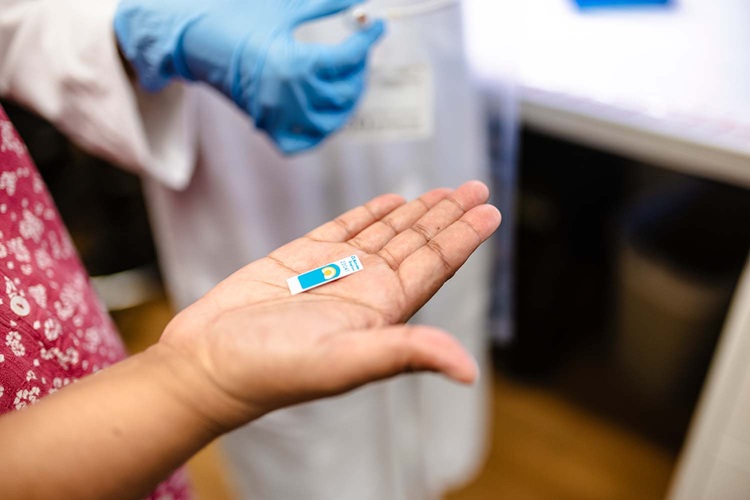Hematological Ratios Associated with Mortality in Pediatric Trauma Patients
|
By LabMedica International staff writers Posted on 14 Nov 2019 |
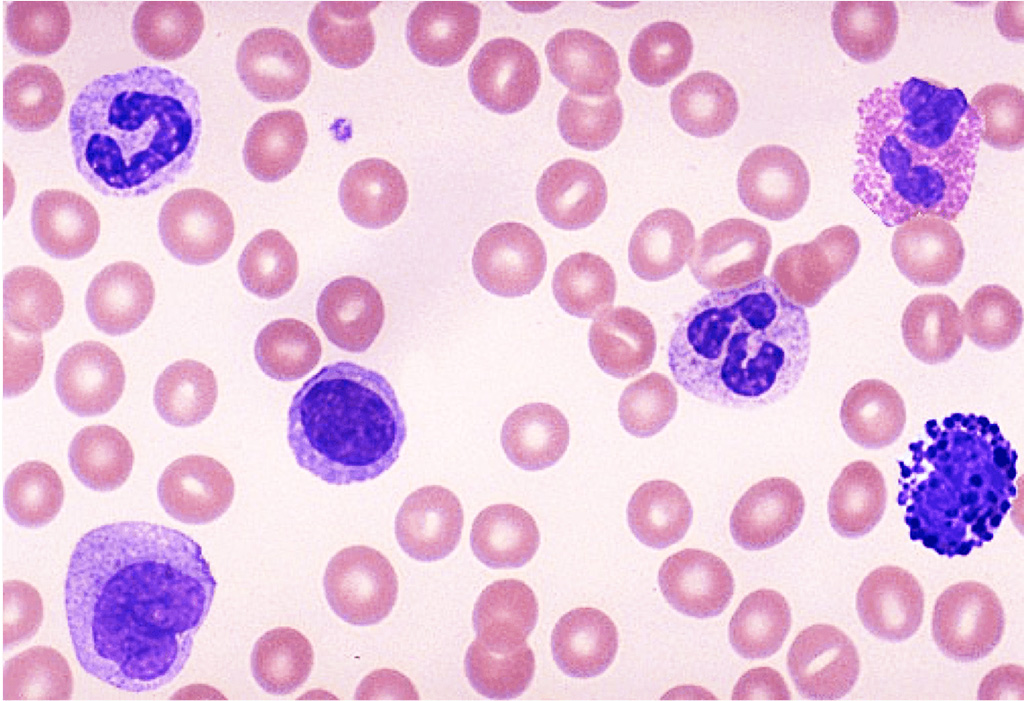
Image: A blood film showing neutrophils and lymphocytes and other white and red blood cells, and a platelet (Photo courtesy of University of Minnesota).
Trauma-related injury as a potential cause of death affects millions of people worldwide, especially in less developed countries and furthermore, it is the leading cause of mortality in pediatric trauma patients.
The hematological parameters, the neutrophil-to-lymphocyte ratio (NLR) and the platelet-to-lymphocyte ratio (PLR) (as a new marker of inflammatory status), have been investigated to examine the prediction ability of systemic inflammatory response in many other disorders, including malignant cancers and pulmonary diseases.
An emergency physician at the Sivas Cumhuriyet University Hospital (Sivas, Turkey) evaluated the prognostic ability of NLR and PLR on mortality in pediatric trauma (PT) patients. This retrospective study included a total of 358 PT patients admitted to the emergency department (ED) of the hospital, between January 2010 and June 2018, due to acute trauma.
Data for hemoglobin (Hb), neutrophil, monocyte, white blood cell (WBC), lymphocyte, blood glucose, alanine aminotransferase (ALT), aspartate aminotransferase (AST), activated partial thromboplastin time (aPTT), and international normalized ratio (INR) were retrospectively derived from the medical record database of the first electronic application of biochemical results. Both the NLR and PLR were calculated at the time of admission by dividing the blood neutrophil count and the blood platelet count, respectively, by the lymphocyte count. The data regarding absolute neutrophil count and absolute lymphocyte count were obtained from the first routine blood assay at the time of admission.
The scientists reported that the NLR and PLR values were significantly higher in survivors than in non-survivors (NLR, 6.2±5.7 versus 2.6±2.5; PLR, 145.3±85.0 versus 46.2±25.2. The NLR (odds ratio [OR], 3.21 ;) PLR (OR, 0.90) blood glucose (OR, 1.02), and Injury Severity Score (ISS) (OR, 1.28)) were independent predictors of the mortality risk in PT patients. The area under the curve in the ROC curve analysis was 0.764 with a cut-off of 2.77 (sensitivity 70%, specificity 77%) for the NLR; and 0.928 with a cut-off of 61.83 (sensitivity 90%, specificity 85%) for the PLR.
The author concluded that acquiring the NLR and PLR at the time of admission could be a useful predictor for mortality in PT patients. The study indicated that NLR and PLR, as well as blood glucose and ISS at the time of admission, were independently associated with post-traumatic systemic inflammatory response syndrome (SIRS). The study was published in the October 2019 issue of the Rambam Maimonides Medical Journal.
Related Links:
Sivas Cumhuriyet University Hospital
The hematological parameters, the neutrophil-to-lymphocyte ratio (NLR) and the platelet-to-lymphocyte ratio (PLR) (as a new marker of inflammatory status), have been investigated to examine the prediction ability of systemic inflammatory response in many other disorders, including malignant cancers and pulmonary diseases.
An emergency physician at the Sivas Cumhuriyet University Hospital (Sivas, Turkey) evaluated the prognostic ability of NLR and PLR on mortality in pediatric trauma (PT) patients. This retrospective study included a total of 358 PT patients admitted to the emergency department (ED) of the hospital, between January 2010 and June 2018, due to acute trauma.
Data for hemoglobin (Hb), neutrophil, monocyte, white blood cell (WBC), lymphocyte, blood glucose, alanine aminotransferase (ALT), aspartate aminotransferase (AST), activated partial thromboplastin time (aPTT), and international normalized ratio (INR) were retrospectively derived from the medical record database of the first electronic application of biochemical results. Both the NLR and PLR were calculated at the time of admission by dividing the blood neutrophil count and the blood platelet count, respectively, by the lymphocyte count. The data regarding absolute neutrophil count and absolute lymphocyte count were obtained from the first routine blood assay at the time of admission.
The scientists reported that the NLR and PLR values were significantly higher in survivors than in non-survivors (NLR, 6.2±5.7 versus 2.6±2.5; PLR, 145.3±85.0 versus 46.2±25.2. The NLR (odds ratio [OR], 3.21 ;) PLR (OR, 0.90) blood glucose (OR, 1.02), and Injury Severity Score (ISS) (OR, 1.28)) were independent predictors of the mortality risk in PT patients. The area under the curve in the ROC curve analysis was 0.764 with a cut-off of 2.77 (sensitivity 70%, specificity 77%) for the NLR; and 0.928 with a cut-off of 61.83 (sensitivity 90%, specificity 85%) for the PLR.
The author concluded that acquiring the NLR and PLR at the time of admission could be a useful predictor for mortality in PT patients. The study indicated that NLR and PLR, as well as blood glucose and ISS at the time of admission, were independently associated with post-traumatic systemic inflammatory response syndrome (SIRS). The study was published in the October 2019 issue of the Rambam Maimonides Medical Journal.
Related Links:
Sivas Cumhuriyet University Hospital
Latest Hematology News
- MRD Tests Could Predict Survival in Leukemia Patients
- Platelet Activity Blood Test in Middle Age Could Identify Early Alzheimer’s Risk
- Microvesicles Measurement Could Detect Vascular Injury in Sickle Cell Disease Patients
- ADLM’s New Coagulation Testing Guidance to Improve Care for Patients on Blood Thinners
- Viscoelastic Testing Could Improve Treatment of Maternal Hemorrhage
- Pioneering Model Measures Radiation Exposure in Blood for Precise Cancer Treatments
- Platelets Could Improve Early and Minimally Invasive Detection of Cancer
- Portable and Disposable Device Obtains Platelet-Rich Plasma Without Complex Equipment
- Disposable Cartridge-Based Test Delivers Rapid and Accurate CBC Results
- First Point-of-Care Heparin Monitoring Test Provides Results in Under 15 Minutes

- New Scoring System Predicts Risk of Developing Cancer from Common Blood Disorder
- Non-Invasive Prenatal Test for Fetal RhD Status Demonstrates 100% Accuracy
- WBC Count Could Predict Severity of COVID-19 Symptoms
- New Platelet Counting Technology to Help Labs Prevent Diagnosis Errors
- Streamlined Approach to Testing for Heparin-Induced Thrombocytopenia Improves Diagnostic Accuracy
- POC Hemostasis System Could Help Prevent Maternal Deaths
Channels
Clinical Chemistry
view channel
POC Breath Diagnostic System to Detect Pneumonia-Causing Pathogens
Pseudomonas aeruginosa is a major cause of hospital-acquired and ventilator-associated pneumonia, particularly in lung transplant recipients and patients with structural lung disease. Its ability to form... Read more
Online Tool Detects Drug Exposure Directly from Patient Samples
Doctors often rely on patient interviews and medical records to determine what medications a person has taken, but this information is frequently incomplete. People may forget drugs they used, take over-the-counter... Read moreMolecular Diagnostics
view channel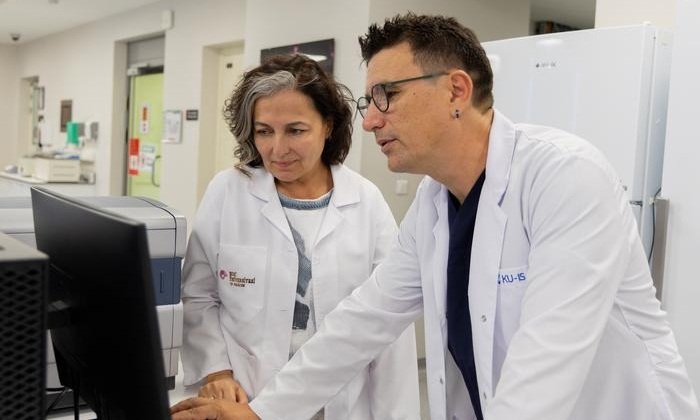
Rapid Diagnostic Breakthrough Simultaneously Detects Resistance and Virulence in Klebsiella Pneumoniae
Antibiotic resistance is a steadily escalating threat to global healthcare, making common infections harder to treat and increasing the risk of severe complications. One of the most concerning pathogens... Read more
DNA Detection Platform Enables Real-Time Molecular Detection
A next-gen DNA detection platform enables real-time molecular detection by detecting nucleic acids directly without enzymes or thermocyclers, thereby slashing costs, reducing complexity, and boosting reliability... Read moreImmunology
view channel
Blood Test Could Identify Colon Cancer Patients to Benefit from NSAIDs
Colon cancer remains a major cause of cancer-related illness, with many patients facing relapse even after surgery and chemotherapy. Up to 40% of people with stage III disease experience recurrence, highlighting... Read moreBlood Test Could Detect Adverse Immunotherapy Effects
Immune checkpoint inhibitors have transformed cancer treatment, but they can also trigger serious immune-related adverse events that damage healthy organs and may become life-threatening if not detected early.... Read moreMicrobiology
view channel
Breakthroughs in Microbial Analysis to Enhance Disease Prediction
Microorganisms shape human health, ecosystems, and the planet’s climate, yet identifying them and understanding how they are related remains a major scientific challenge. Even with modern DNA sequencing,... Read more
Blood-Based Diagnostic Method Could Identify Pediatric LRTIs
Lower-respiratory tract infections (LRTIs) are a leading cause of illness and death worldwide, and pneumonia is the leading infectious cause of death in children under five, claiming the lives of over... Read morePathology
view channel
Rapid Low-Cost Tests Can Prevent Child Deaths from Contaminated Medicinal Syrups
Medicinal syrups contaminated with toxic chemicals have caused the deaths of hundreds of children worldwide, exposing a critical gap in how these products are tested before reaching patients.... Read more
Tumor Signals in Saliva and Blood Enable Non-Invasive Monitoring of Head and Neck Cancer
Head and neck cancers are among the most aggressive malignancies worldwide, with nearly 900,000 new cases diagnosed each year. Monitoring these cancers for recurrence or relapse typically relies on tissue... Read more
Common Health Issues Can Influence New Blood Tests for Alzheimer’s Disease
Blood-based tests for Alzheimer’s disease are transforming diagnosis by offering a simpler alternative to spinal taps and brain imaging. However, many people evaluated at memory clinics also live with... Read more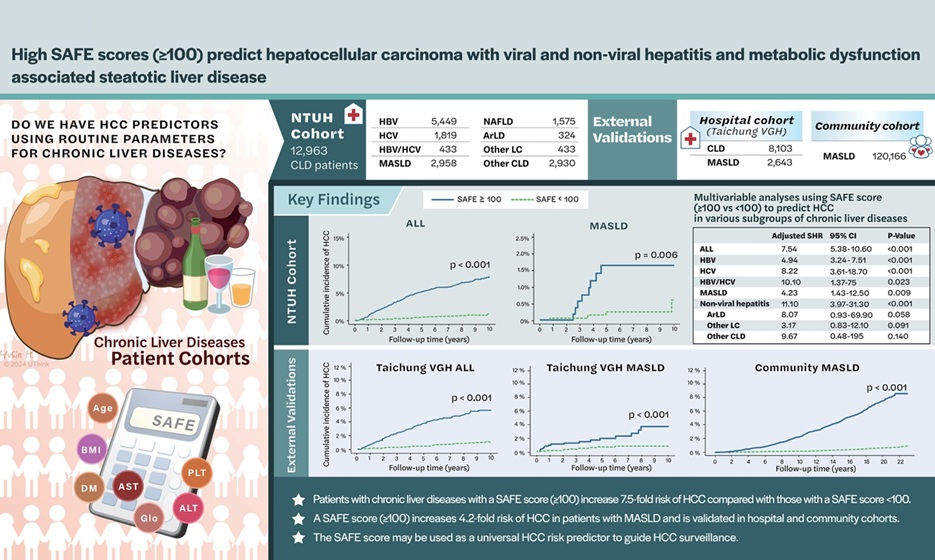
Blood Test Formula Identifies Chronic Liver Disease Patients with Higher Cancer Risk
Chronic liver disease affects millions worldwide and can progress silently to hepatocellular carcinoma (HCC), one of the deadliest cancers globally. While surveillance guidelines exist for patients with... Read moreTechnology
view channel
Machine Learning Models Diagnose ALS Earlier Through Blood Biomarkers
Amyotrophic lateral sclerosis (ALS) is a rapidly progressive neurodegenerative disease that is notoriously difficult to diagnose in its early stages. Early symptoms often overlap with other neurological... Read more
Artificial Intelligence Model Could Accelerate Rare Disease Diagnosis
Identifying which genetic variants actually cause disease remains one of the biggest challenges in genomic medicine. Each person carries tens of thousands of DNA changes, yet only a few meaningfully alter... Read moreIndustry
view channel
BD and Penn Institute Collaborate to Advance Immunotherapy through Flow Cytometry
BD (Becton, Dickinson and Company, Franklin Lakes, NJ, USA) has entered into a strategic collaboration with the Institute for Immunology and Immune Health (I3H, Philadelphia, PA, USA) at the University... Read more














